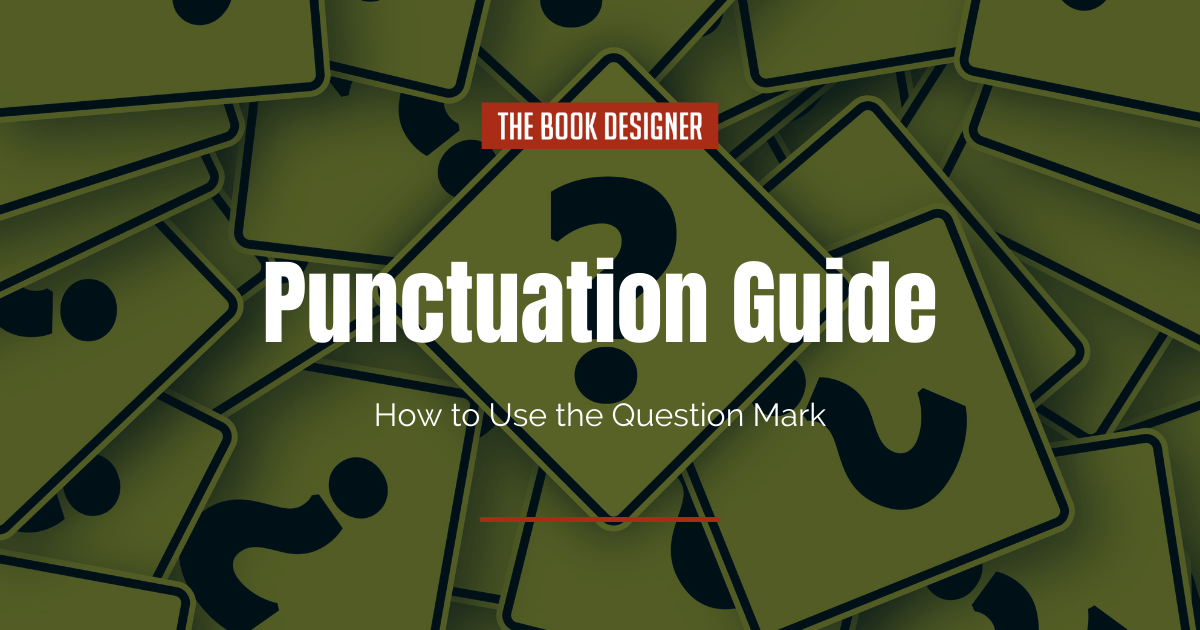In our turbulent and ever-changing world, it stands to reason that we’d have a lot of questions.
Luckily for us, the question mark is the perfect piece of punctuation for clearly articulating and posing these questions. Best of all: it’s so easy to use!
In this article, we’ll look at proper question mark usage:
What’s the Purpose of a Question Mark?
It comes as no surprise that the primary function of the question mark is to indicate that a sentence is interrogative; simply put, that it’s a question. Most questions seek information, as can be readily noted in direct questions. These often begin with a question word (who, what, when, where, why, or how), such as in the example:
What did you think of the end of the movie?
Clearly, the writer in this example is seeking information, and thus posed the question as an interrogative sentence.
However, it’s not uncommon for us to phrase questions in a manner that mirrors a declarative sentence.
We can often note in speech how the speaker raises their voice at the end of a declarative sentence to indicate that they are asking a question rather than making a statement. It’s important to note that the change in tone, though, only works in speech: in writing, we need to use question marks to clarify to the reader that what may appear to be a declarative sentence is actually serving the purpose of a question. For example:
You thought the movie was boring? Really?
The first question repeats a piece of information as an indication of disbelief on the writer’s behalf. The second places further emphasis on the writer’s emotions; even though it ends with a question mark, it is not seeking an answer.
How Do You Use Question Marks with Quotation Marks?
Most of the time, the position of question marks is relatively straightforward. In a basic interrogative sentence, the question mark serves as the terminal punctuation.
However, the presence of other punctuation can make the process of properly placing your question mark a little more challenging.
There are several different situations involving question marks and quotation marks in the same sentence, and the various rules and guidelines can seem quite confusing upon first glance. However, they boil down to this:
- If the question mark applies to what is being said inside the quotation marks, then the question mark also goes inside of them.
- If the question mark applies to the entirety of the sentence rather than just the information inside the quotation marks, then it goes outside of them.
Let’s take a look at some of these scenarios in action.
Inside: When it was time for me to leave for work, my puppy could only stare at me with wide eyes that seemed to beg, “Where are you going?”
Most commonly seen in written dialogue, the use of a question mark in the sentence above applies to the implied question in the puppy’s eyes, and thus appears inside the quotation marks.
Outside: Aren’t you the one that always says, “all is well that ends well”?
In the above example, the phrase being quoted is not interrogative unto itself, but rather serves as a smaller part of the greater overall question. Therefore, the question mark is placed outside the quotation marks.
More Examples
When quoted information appears in an interrogative sentence, properly placing the question mark can start to seem a bit more complicated. However, this method is fairly similar to the rules outlined above and relies heavily on a logical understanding of the sentence’s purpose.
When you’re quoting a sentence that contains a question, the question mark logically pertains to the information inside the quotation marks, and thus would appear as such:
“My nosy neighbor always asks me, ‘Where are you going?’ Like it’s any of her business!”
The writer is simply recalling a question that was previously asked; as the overall statement itself is declarative rather than interrogative, the question mark belongs inside the quotation mark pertaining to the cited speech rather than at the end of the sentence in its entirety.
Sometimes, though, the quoted information is not the question itself, but rather a part of a greater interrogative sentence. For example:
“What do you mean he said ‘Like it’s any of her business’?” the neighbor asked in disbelief.
Here the writer is asking a question that also involves quoted information. As the quoted information is not unto itself a question, however, and the question mark pertains to the sentence as a whole, the terminal punctuation belongs inside the closing quotation marks.
How Do You Use Question Marks with Parentheses?
The relationship between question marks and parentheses is quite similar to that between question and quotation marks. If the question mark applies to the information inside the parentheses, then it also goes inside the parentheses:
He left late Monday (or was it Tuesday?) night.
Here the question is contained entirely within the parentheses and does not pertain to the purpose of the overall sentence.
Sometimes, though, the parenthetical information is part of the greater question. In this case, the question mark appears outside of the parentheses.
Are you planning to go to his birthday party (April 4)?
In the above example, the parenthetical information (April 4) is included in the greater interrogative sentence, so the question mark belongs outside of the closing parenthesis.
How to Punctuate Indirect Questions
Fascinatingly, there is one type of question that never receives a question mark: the indirect question. This is because indirect questions appear as a part of a declarative statement; they aren’t truly asking a question that seeks information, but rather expressing a piece of information. For example:
Watching the toddler throw a fit in the middle of the busy store, we all tiredly wondered when his parents would finally try to quiet him.
Since the sentence above is stating the thoughts of the other people in the store, it’s considered a declarative statement and thus doesn’t require a question mark – after all, it isn’t truly asking a question!
For other punctuation guides, check out these articles:
- Related: The Exclamation Point
- Related: The Period
- Related: The Comma
- Related: Full Punctuation Guide
Is Your Question Mark Usage On Point?
Yes? Yes.
As we close this article out, it’s important that, in a world full of questions, we know how to most efficiently express them in our writing.
Clarity is the first step toward understanding and brings us closer to mastering our use of the English language.
If you’re an editor or proofreader who just read this post, let us know in the comments. We might need your help :)



